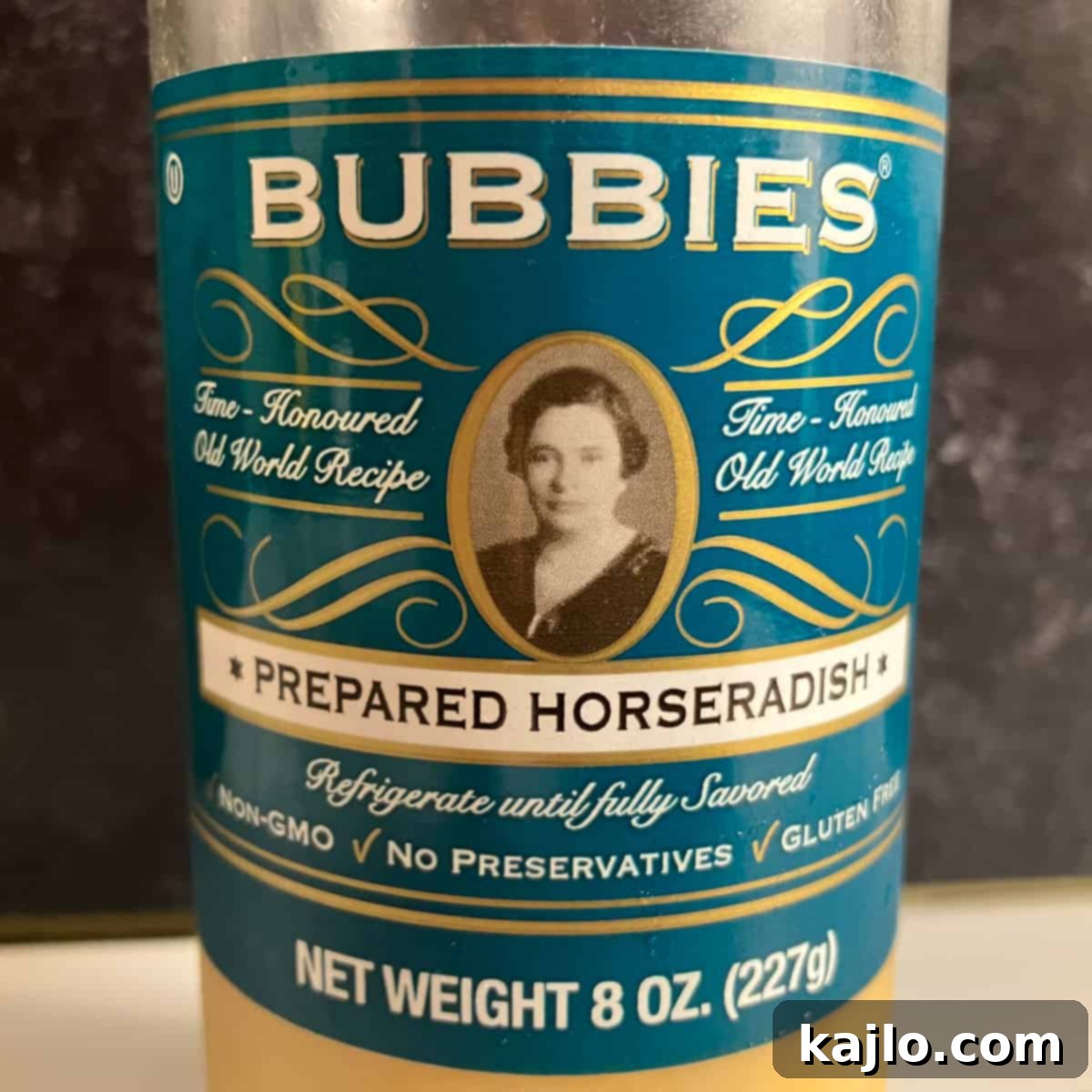Running low on horseradish or simply not a fan? Discover the ultimate guide to horseradish substitutes that deliver similar zing and flavor profiles for all your culinary needs. Whether you’re whipping up a classic cocktail sauce, a fiery Bloody Mary, a creamy mayo, or preparing a traditional prime rib, we’ve got you covered. This comprehensive article even explores suitable alternatives for the revered Passover Seder plate.
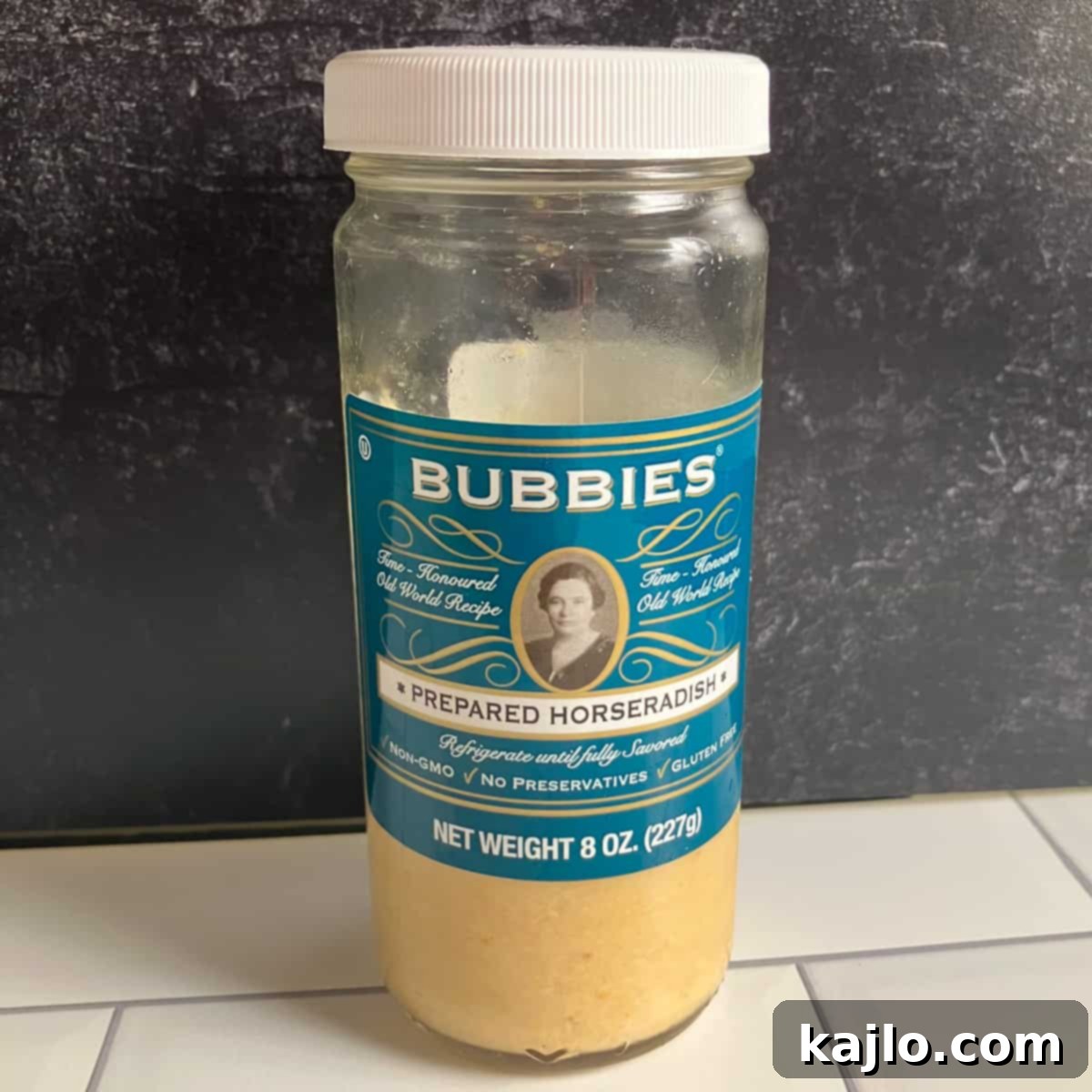
The distinctive kick of horseradish is often irreplaceable for many, but what if you suddenly find your pantry empty, or perhaps you’re catering to guests who prefer a milder taste? The good news is that numerous horseradish alternatives exist, offering similar heat, pungency, or even a different flavor profile while maintaining a comparable texture. From spicy root vegetables to aromatic powders, your culinary creations don’t have to suffer from a lack of this vibrant ingredient.
In this guide, we’ll delve into the world of effective horseradish replacements, showing you how to recreate that signature flavor and heat in various dishes. We’ll explore options for crafting a delicious horseradish cream substitute, a vibrant prepared horseradish substitute, or even a potent horseradish powder substitute. Prepare to uncover your new favorite alternative and keep your dishes exciting and flavorful, no matter the circumstances.
Understanding Horseradish: Flavor, Forms, and Family
Horseradish, scientifically known as Armoracia rusticana, is a root vegetable revered for its intense, pungent, and spicy flavor. Belonging to the Brassicaceae family, it shares genetic ties with other well-known cruciferous vegetables like mustard, cabbage, broccoli, and notably, wasabi. Its unique heat isn’t from capsaicin (found in chili peppers) but from volatile compounds called isothiocyanates, which are released when the root is grated or crushed. These compounds irritate the sinuses, leading to that characteristic rush of heat that clears the nasal passages and can bring tears to your eyes.
Typically, horseradish is used as a spice or a condiment, offering a sharp, peppery taste that can elevate a wide array of dishes. It can be found in several forms:
- Fresh Horseradish Root: This is the most potent form. When freshly grated, it releases the maximum amount of pungent oils, delivering an unparalleled spicy kick. Its crisp, white flesh is often used raw or lightly processed to preserve its intensity.
- Prepared Horseradish (Pickled Horseradish): This widely available form consists of grated horseradish root preserved in vinegar, salt, and sometimes sugar. The vinegar stabilizes the flavor, making it milder than fresh horseradish, yet still offering a significant bite. You’ll typically find it in jars in the refrigerated section of most grocery stores, with brands like Bubbies being quite popular.
- Horseradish Sauce (Creamed Horseradish): Distinct from prepared horseradish, this sauce combines prepared horseradish with a creamy base such as sour cream, heavy cream, or mayonnaise. Famous examples include Arby’s Horsey Sauce. The addition of cream mellows the heat significantly, creating a rich, tangy, and subtly spicy condiment perfect for meats.
Can Horseradish Sauce Substitute for Prepared Horseradish?
Absolutely. Horseradish sauce can serve as a convenient alternative to prepared horseradish, especially if you prefer a less intense flavor or a creamier texture. Given that horseradish sauce is inherently milder and often incorporates a dairy or mayonnaise base, you can begin with a 1:1 substitution ratio and then adjust the quantity as needed to achieve your desired level of heat and creaminess. While both are less potent than freshly grated horseradish, the sauce offers a smoother, more palatable experience for some.
Crafting a Creamy Horseradish Substitute
If you have prepared horseradish but need a creamy sauce, you can easily create your own creamy horseradish substitute. Simply mix prepared horseradish with a creamy ingredient like mayonnaise, sour cream, or plain Greek yogurt. This not only reduces the intensity but also adds a luxurious texture. For a vegan alternative, consider blending silken tofu until smooth and combining it with prepared horseradish for a dairy-free creamy sauce.
🏆 Top Horseradish Substitutes: Flavor, Heat, and Texture Match
When searching for the ideal horseradish replacement, the goal is often to match its distinct pungent heat and sometimes its texture. For a direct flavor match, wasabi and hot mustard are usually your best bets, as they share similar volatile compounds that create that sinus-clearing sensation. However, depending on your recipe and personal preference, other root vegetables and spices can also offer excellent alternatives. Below, we explore the best options, complete with practical substitution guidelines.
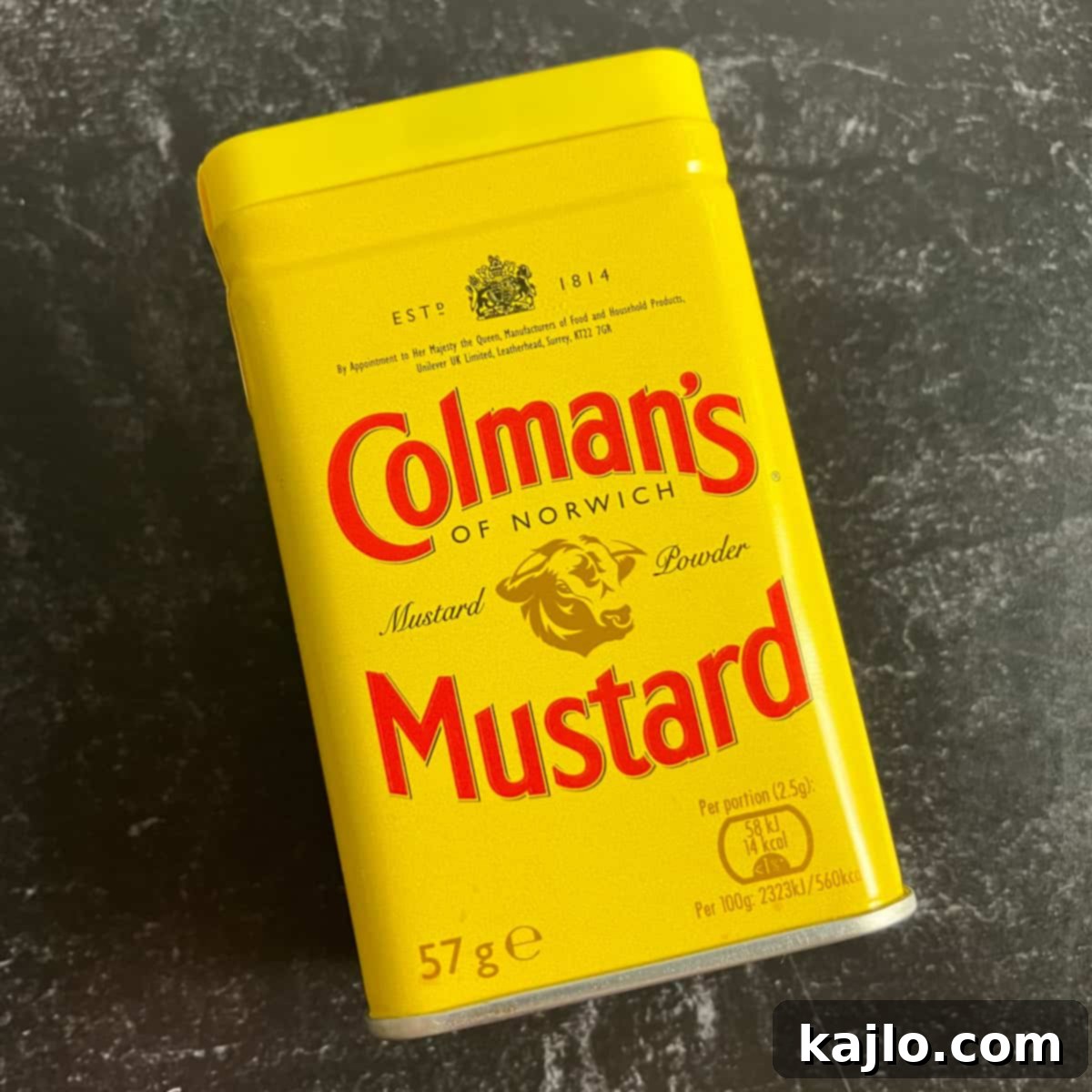
Here’s a detailed chart outlining excellent horseradish substitutes and their recommended conversion ratios to help you achieve the perfect balance in your dishes:
| Horseradish Substitute | Substitute for… | 1 teaspoon horseradish equals this much substitute |
|---|---|---|
| Grated fresh wasabi root | Grated fresh horseradish root | 1 tsp (adjust to taste) |
| Fresh grated ginger | Grated fresh horseradish | 1 tsp |
| Grated black radish | Grated fresh horseradish | 1 tsp |
| Prepared horseradish | Freshly grated horseradish | 2 tsp |
| Grated daikon radish | Grated fresh horseradish | 1 tsp (adjust to taste) |
| Grated parsnip or grated rutabaga | Grated fresh horseradish | 1 tsp (adjust to taste) |
| Horseradish sauce | Prepared horseradish | 1 tsp (adjust to taste) |
| Wasabi paste | Prepared horseradish | ½ tsp |
| Wasabi oil | Prepared horseradish | ½ tsp |
| Wasabi powder | Prepared horseradish | ¼ tsp (mix with water to form a paste) |
| Chinese hot mustard or spicy brown mustard | Prepared horseradish | 1 tsp |
| Mustard oil | Prepared horseradish | ½ tsp |
| Mustard powder (e.g., Colman’s) | Prepared horseradish | ¼ tsp (mix with water to form a paste) |
| Sauerkraut | Prepared horseradish | 1 tsp (adjust to taste) |
| Prepared horseradish | Dried horseradish (powder) | 1½ tsp (adjust to taste) |
| Mustard seeds (crushed with mortar and pestle) | Horseradish powder | 1 tsp |
| Mustard powder | Horseradish powder | 1 tsp |
Is Horseradish the Same as Wasabi?
No, horseradish and wasabi are not the same, although they are often confused due to their similar pungent flavors and belong to the same plant family. Wasabi (Wasabia japonica) is a perennial plant native to Japan, while horseradish (Armoracia rusticana) is native to southeastern Europe and western Asia. Both deliver a hot, fiery kick that stimulates the sinuses, making them excellent substitutes for each other. However, genuine wasabi is typically considered hotter and has a more complex, herbal note compared to horseradish.
When substituting, it’s important to note that pure wasabi root is quite expensive and rare outside of Japan. What is commonly sold as “wasabi paste” in many regions is often a mixture primarily made from horseradish, mustard, and green food coloring. Despite this, these “wasabi” products still offer a comparable heat and can function well as a horseradish alternative. Be mindful that wasabi paste is typically green, which might alter the appearance of your dish. For texture, use fresh wasabi to replace fresh horseradish, and wasabi paste or oil for prepared horseradish.
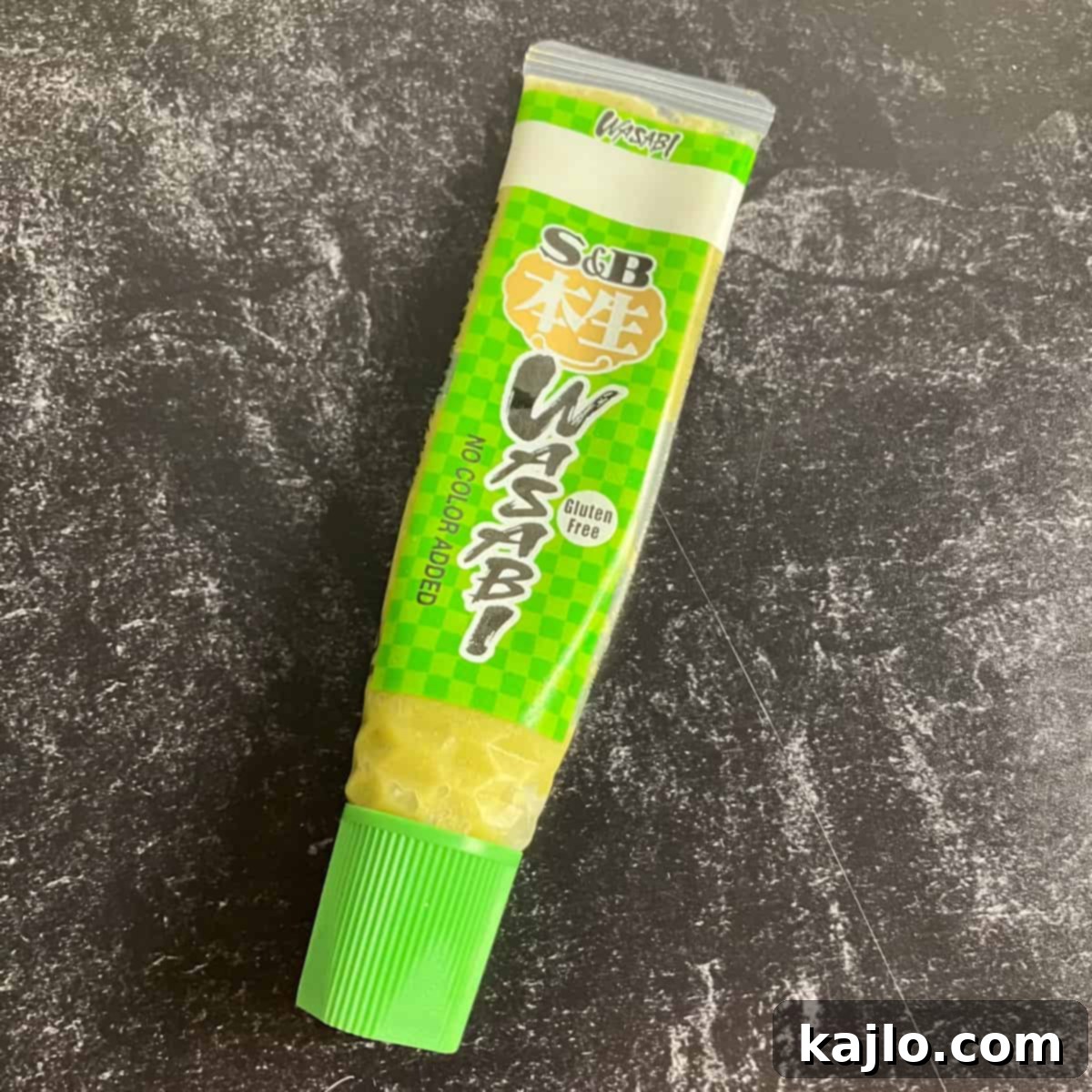
Mustard: A Versatile Horseradish Replacement
The entire mustard family offers a fantastic range of options for replacing horseradish. Similar to horseradish, mustard’s pungent heat comes from isothiocyanates. If you’re looking to replicate horseradish’s fiery intensity, opt for varieties like Chinese hot mustard, Colman’s mustard powder, or mustard oil. These options provide a sharp, spicy burst that closely mimics the horseradish experience.
For a slightly milder yet still flavorful alternative, consider Dijon mustard, spicy brown mustard, or even freshly crushed mustard seeds. Dijon, in particular, offers a creamy texture and a tangy, savory flavor with a pleasant warmth that can complement many dishes where horseradish is typically used. When using mustard powder, simply mix it with a small amount of water to create a paste similar to prepared horseradish.
A note on mustard oil: while a staple in some cuisines, particularly Indian, it is regulated in several countries, including the US, UK, and Canada, for use as a cooking oil due to its high erucic acid content (source). Erucic acid has been linked to health concerns in animal studies. However, it can often be found in smaller “for external use” or “for massage” bottles, and in very small quantities, as a flavor agent rather than a primary cooking oil, it can still provide the desired pungent kick.
Ginger: A Sweeter, Spicier Alternative
Ginger, another potent root, makes an excellent horseradish replacement if you’re seeking a flavor profile that is slightly sweeter and less aggressively pungent, yet still delivers a noticeable warmth. Its aromatic, slightly peppery, and subtly sweet notes can add depth to dishes where horseradish might be too overwhelming.
For optimal results, use fresh ginger root, finely grated, to replace fresh horseradish. The texture and initial bite will be similar, but the flavor will lean more towards warm spice rather than sharp pungency. If your recipe calls for powdered horseradish, ginger powder can be used as a direct substitute. Additionally, pickled ginger, commonly served with sushi, can stand in for prepared horseradish, offering a tangy and mild spicy element with a delightful texture.
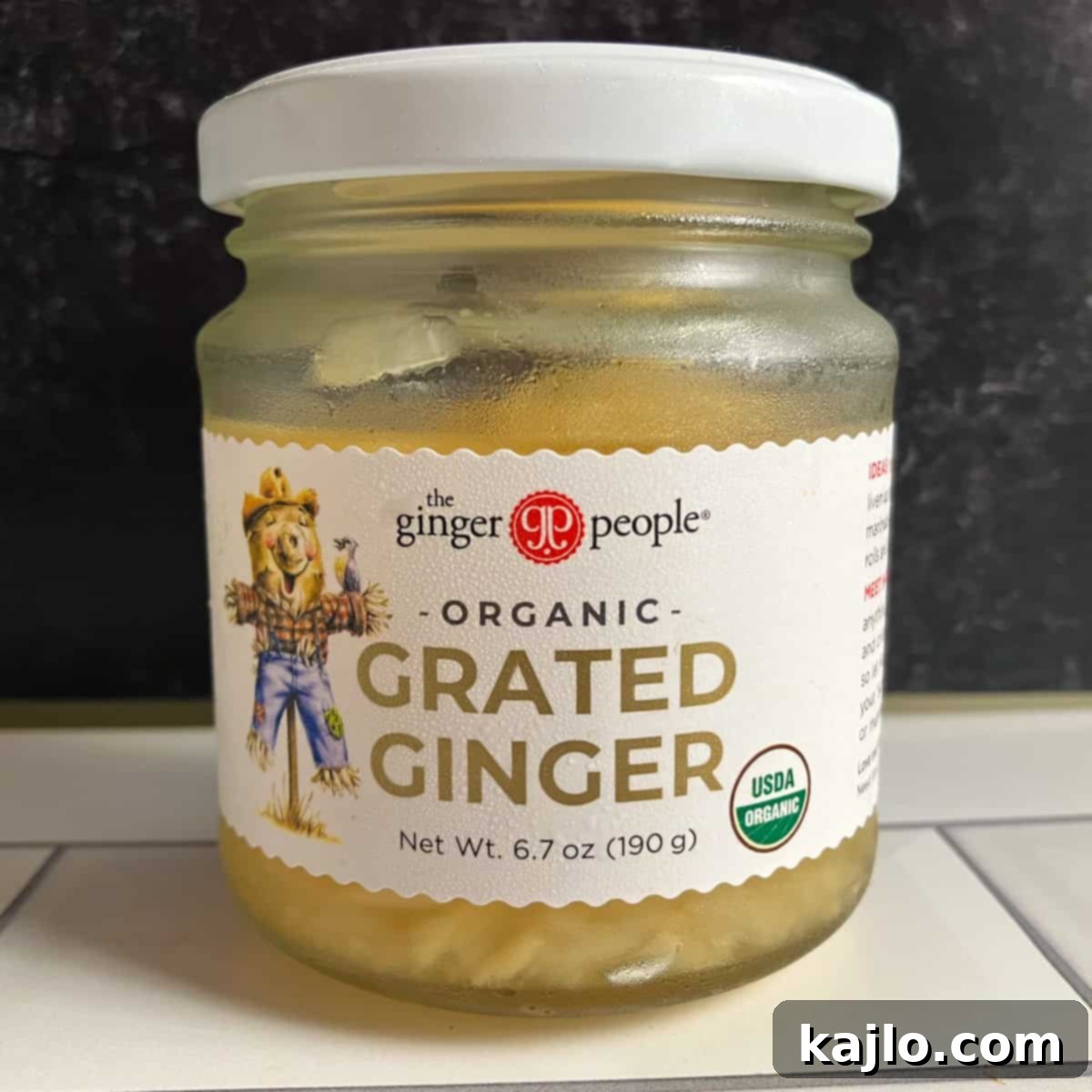
Daikon Radish: A Mild Horseradish Substitute
If you’re looking for a fresh root vegetable to replace horseradish but prefer a milder, less intense flavor, daikon radish (also known as winter radish) or even common red radishes can be great options. When grated, they provide a crisp texture and a gentle peppery note that is less potent than horseradish. They are particularly suitable for dishes where you want a subtle bite without overpowering other flavors.
Among the radish family, black radish stands out as the best flavor match for horseradish, offering a more pronounced spiciness and earthiness. However, black radishes can be challenging to find in many standard grocery stores. If you do find one, it’s a worthy alternative for a closer flavor experience. For any radish substitute, start with a 1:1 ratio and adjust upwards if you desire more flavor, keeping in mind they won’t reach the same level of sinus-clearing heat as horseradish.
What Else Tastes Like Horseradish? Earthy and Mild Options
Beyond the primary substitutes, several other ingredients can serve as effective horseradish replacements, especially if you’re seeking an earthy flavor or a milder alternative. Consider adding sauerkraut, grated parsnip, or grated rutabaga to your culinary arsenal. These options offer a grounding, slightly sweet, or tangy profile without the intense heat of horseradish, making them excellent choices for children or those sensitive to spicy foods.
- Parsnips and Rutabagas: When grated, parsnips and rutabagas provide a similar texture to fresh horseradish but introduce a natural sweetness and earthiness. They can be used raw or lightly cooked, offering a comforting flavor that complements many savory dishes.
- Sauerkraut: The tangy, fermented flavor of sauerkraut makes it an ideal stand-in for prepared horseradish, especially in recipes where a pickled, acidic note is desired. Its sourness and unique texture can add an interesting dimension to your dish without the heat.
The benefit of using parsnips, rutabagas, or sauerkraut as an alternative is their mildness. You can often add larger quantities to your recipe without concern of making the dish excessively spicy. This allows for greater flexibility and customization, moving beyond strict 1:1 substitutions to enhance texture and flavor as desired.
Horseradish Substitute in Cocktail Sauce
Cocktail sauce, a beloved accompaniment to seafood, famously relies on horseradish for its signature zing. If you’re crafting a cocktail sauce without horseradish, there are several excellent alternatives to consider. Many recipes suggest using chili powder to provide a warm, robust heat, while a few dashes of Tabasco or another favorite hot sauce can deliver a quick, vibrant kick similar to what horseradish usually offers.
For a flavor profile closer to horseradish, hot mustard or wasabi paste are superb choices. Combine these with traditional cocktail sauce ingredients like ketchup, Worcestershire sauce, lemon juice, and a dash of hot sauce for a delicious and spicy dip that perfectly complements shrimp, oysters, or other shellfish.
Substitute for Horseradish in Bloody Mary
The Bloody Mary, a quintessential brunch cocktail, often includes horseradish for its spicy, savory depth. If you find yourself without prepared horseradish, don’t fret! As The Kitchn suggests, skipping it entirely might go unnoticed by many, as the cocktail’s complex blend of tomato juice, Worcestershire sauce, hot sauce, and spices already provides a rich flavor. However, if you crave that characteristic sinus-clearing warmth, incorporating a small amount of mustard powder or wasabi paste into your Bloody Mary mix can achieve a similar effect, adding a delightful spicy kick.
Horseradish Substitute for the Seder Plate
On the Passover Seder plate, horseradish (maror) symbolizes the bitterness of slavery. For this specific ritual use, culinary flavor matching takes a backseat to symbolic meaning. Traditional horseradish substitutes for Passover include bitter leafy greens such as Romaine lettuce, celery, and endive. Other acceptable options might include arugula, chicory, kale, or turnip greens. These vegetables are chosen for their bitter taste, fulfilling the ritual requirement rather than replicating the exact flavor of horseradish.
It’s important to understand that these specific Seder plate alternatives are generally not suitable as culinary substitutes for horseradish in everyday recipes. Their primary purpose is symbolic, not flavor-driven. For a deeper understanding of the significance of bitter herbs on the Seder plate, you can consult resources like MyJewishLearning.com.
Can I Use Radish Instead of Horseradish?
While both share the name “radish,” horseradish and common radishes are distinct plants with different culinary applications and flavor intensities. Horseradish (Armoracia rusticana) is prized for its extreme pungency, whereas garden radishes (Raphanus sativus), like red radishes or daikon (winter radish), are generally milder and offer a crisp, slightly peppery flavor. Among radishes, black radish comes closest to matching horseradish’s flavor profile, providing a more robust and peppery kick.
You can certainly use grated daikon or regular red radishes as an alternative to fresh horseradish. However, expect a significantly milder flavor. This can be an advantage if you prefer less heat, but it won’t deliver the characteristic sinus-clearing intensity of true horseradish. Experiment with quantities to find a balance that suits your taste.
💰 Where to Buy Horseradish Near You?
If you’re still determined to find the real thing, horseradish products are usually readily available. Prepared horseradish and horseradish sauce are common fixtures in the refrigerated condiments section of most mainstream grocery stores in the US. Fresh horseradish root, while sometimes more seasonal, can often be found at local farmer’s markets, larger international grocery stores, or health food stores. If you’re having trouble locating it locally, online retailers offer a convenient way to purchase various forms of horseradish and have them delivered directly to your door:
- Fresh Horseradish Root
- Prepared Horseradish
- Horseradish Sauce
- Horseradish Powder
- Onion Blossom Horseradish Dip
What’s a Good Horseradish Substitute for Prime Rib?
Horseradish cream sauce is a timeless pairing for prime rib or roast beef, providing a spicy, creamy counterpoint to the rich meat. If you’re preparing homemade horseradish sauce and find yourself without the main ingredient, don’t despair! Stirring in wasabi paste or a spicy mustard (like Chinese hot mustard or a robust brown mustard) can effectively replicate the desired kick. Just remember that wasabi paste will impart a green hue to your sauce, which might be an unexpected visual for a traditional prime rib accompaniment.
What’s a Good Horseradish Substitute for Mayo?
Creating a spicy horseradish mayonnaise is simple, and substituting is equally easy. To make a flavorful horseradish mayo alternative, simply blend a small amount of wasabi paste, wasabi oil, or hot mustard into your favorite plain mayonnaise. The beauty of this substitution lies in its versatility: you have complete control over the heat level. Start with a tiny amount and gradually add more until you achieve your preferred level of spiciness and flavor. This personalized approach ensures your mayo is perfectly seasoned to your taste.
Is Dijon Mustard a Good Substitute for Horseradish?
Dijon mustard can indeed serve as a good horseradish substitute, particularly for prepared horseradish, but there are nuances to consider. While Dijon offers a tangy, slightly spicy, and robust flavor, its heat level is generally milder than that of horseradish. The intensity can vary significantly between different Dijon mustard brands; some are distinctly spicier and more pungent than others. To achieve a closer flavor match and a more satisfying kick, opt for a hotter, more potent variety of Dijon mustard when using it as an alternative to horseradish. This will ensure your dish retains some of that characteristic bite.
📋 Horseradish Nutrition Overview
Horseradish is a condiment typically consumed in small quantities, meaning its overall nutritional contribution to your diet will be minimal. However, it’s worth noting its basic nutritional profile for those tracking specific macros or micronutrients. Here is an estimated nutrition breakdown (per Cronometer):
| Nutrient | Fresh Horseradish per 1 tsp | Prepared Horseradish per 1 tsp |
|---|---|---|
| Calories | 2 | 0 |
| Total Fat | 0g | 0g |
| Saturated Fat | 0g | 0g |
| Sodium | 21mg | 25mg |
| Total Carbohydrates | 1g | 1g |
| Fiber | 0g | 0g |
| Total Sugar | 0g | 0g |
| Net Carbs | 1g | 1g |
| Protein | 0g | 0g |
| Calcium | 0% DV | 0% DV |
| Iron | 0% DV | 0% DV |
Plain horseradish, in its fresh or prepared form, is naturally a very low-calorie condiment. It is inherently low in carbohydrates, making it suitable for keto diets. Furthermore, it is gluten-free, dairy-free, and vegan, aligning with a variety of dietary preferences and restrictions. It’s important to remember that the nutritional information for horseradish sauce will vary significantly based on the specific brand and ingredients used (e.g., type of cream, added sugars).
Potential Horseradish Benefits
While primarily enjoyed for its flavor, horseradish does possess some beneficial compounds. It is a low-calorie condiment that fits seamlessly into most special diets, including keto, gluten-free, and vegan eating patterns. Horseradish contains antioxidants and small amounts of certain essential vitamins and minerals. However, because it is consumed in such small quantities, you are unlikely to derive significant health benefits from it alone. Its primary role in cuisine remains as a powerful flavor enhancer rather than a major nutritional contributor.
FAQs About Horseradish Substitutes
What’s a good horseradish sauce recipe?
For a classic and highly-regarded horseradish sauce, many turn to Alton Brown’s horseradish cream sauce recipe. This popular formulation typically calls for fresh horseradish, sour cream, Dijon mustard, white wine vinegar, salt, and black pepper. It’s known for its balanced creaminess and sharp flavor, and Alton Brown himself recommends it as a perfect accompaniment to oysters.
Where did the name “horseradish” come from?
Interestingly, the name “horseradish” has no direct connection to horses or to common radishes. One popular theory suggests that the “horse” prefix denotes its large size, coarseness, or strength compared to other radishes, rather than implying any equine association. The “radish” part of the name is thought to derive from the Latin word “radix,” meaning “root.” It may also stem from an English mispronunciation or corruption of its German name, “Meerrettich,” which means “sea radish” (source). So, while the name might seem a bit whimsical, it refers to its nature as a robust root.
How much prepared mustard equals 1 tsp dry mustard?
As a general guideline in recipes, 1 teaspoon of dry mustard powder is roughly equivalent to 1 tablespoon of prepared mustard. This ratio accounts for the liquid content and concentration difference between the dry and paste forms.
Does horseradish sauce go bad?
Yes, horseradish sauce can definitely go bad. Since it typically contains highly perishable ingredients such as sour cream, mayonnaise, or other dairy products, it has a limited shelf life. For optimal freshness and quality, it’s always best to consume horseradish sauce by the “best-by” or “use-by” date printed on its label. Be vigilant for signs of spoilage, such as an off-odor, discoloration, or the presence of mold. If any of these indicators are present, the sauce has spoiled and should be discarded immediately to avoid health risks.
👩🏻🍳 Delicious Recipes Using Horseradish
If you’re looking for ways to incorporate the unique flavor of horseradish into your cooking, or simply want to try some classic dishes that feature this root, here are a few ideas:
- Polish Grated Horseradish with Beets (Ćwikła)
- Horseradish Deviled Eggs
- Horseradish Potato Salad
🧑🏿🍳 Other Recipe Substitutions You Might Need
Mastering the art of ingredient substitutions can be a game-changer in the kitchen. For more helpful tips on making smart swaps in your recipes, explore these guides:
- Best Applesauce Substitute
- Corn Flour Substitute
- Best Salsa Substitutes
- Best Nigella Seed Substitutes
Watch How to Make It!
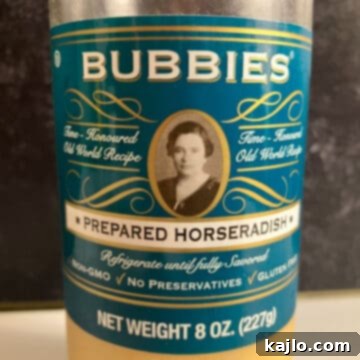
Best Horseradish Substitute (Alternative, Replacement)
Summer Yule
Print Recipe
Pin Recipe
Ingredients
- 1 teaspoon horseradish sauce (plus more as needed) OR
- ½ teaspoon wasabi paste OR
- ½ teaspoon wasabi oil OR
- ¼ teaspoon wasabi powder (add water to make a paste) OR
- 1 teaspoon Chinese hot mustard OR
- ½ teaspoon mustard oil OR
- ¼ teaspoon dried mustard powder (add water to make a paste) OR
- 1 teaspoon sauerkraut (plus more as needed)
Instructions
- Choose a horseradish substitute that best matches the flavor profile and texture you desire. Wasabi and mustard are often top choices for their similar heat.
- For a recipe calling for 1 teaspoon of prepared horseradish, use the listed amount of your chosen alternative from the table above. Adjust the quantity as necessary to achieve your preferred level of flavor and heat.
Notes
Nutrition Info Disclaimer
All recipes and nutritional information on this website are provided for general guidance and may not be suitable for everyone. Depending on your medical needs, dietary restrictions, and personal preferences, certain ingredients or recipes may not be appropriate for you. We strongly recommend consulting with a registered dietitian or your physician to determine the most suitable dietary pattern for your individual health requirements.
The nutrition information presented is an estimate provided as a courtesy. It may vary based on the specific brands of ingredients used and variations in preparation methods. Please note that calorie information on food labels can sometimes be approximate, so it’s advisable not to rely solely on these numbers for precise dietary planning.
“To taste” refers to adjusting ingredients according to your personal preference, which should always adhere to food safety guidelines. Please ensure all food is cooked to safe internal temperatures and avoid consuming undercooked items.
Nutrition
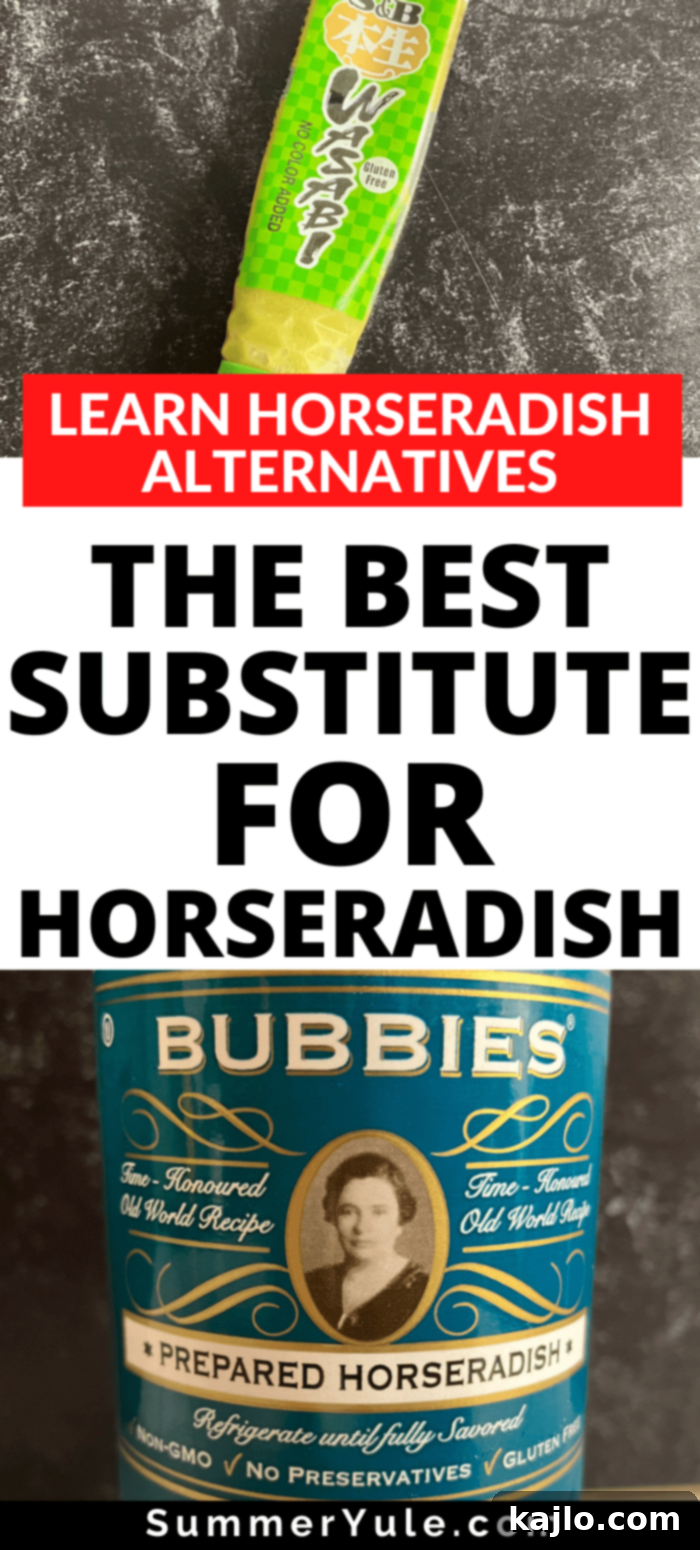
Join our community! Subscribe for all of the latest and greatest recipes, and follow us on Facebook, Pinterest, Instagram, and YouTube!
